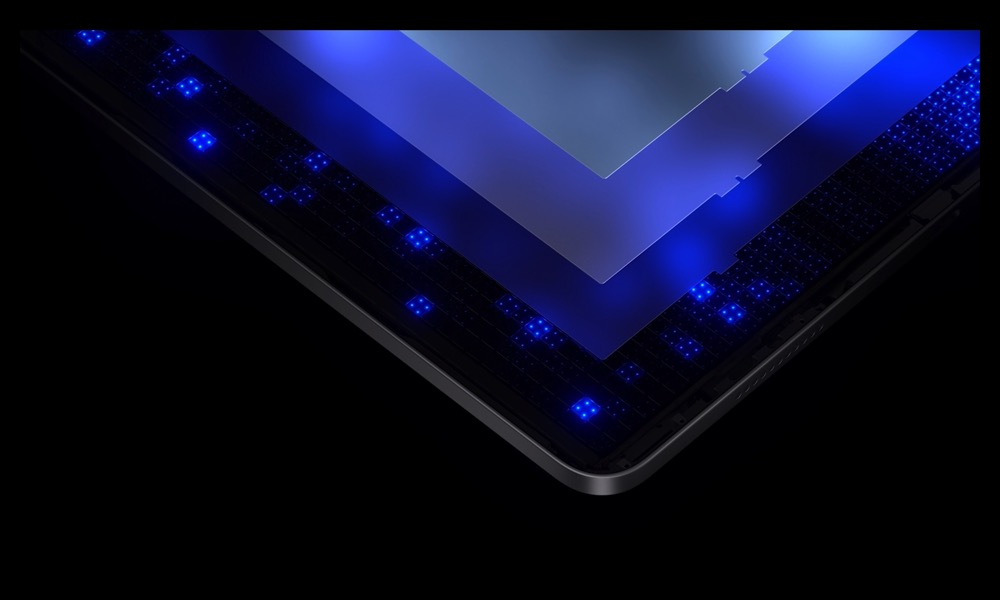The New 12.9-inch iPad Air Could Be a Mini-LED Premium Model
 Credit: Apple
Credit: Apple
Toggle Dark Mode
If recent reports are accurate, Apple will unveil its first new iPads in over 18 months in May. They’re already expected to make a big splash with the first OLED panels on the new iPad Pro duo and a new 12.9-inch tablet joining the iPad Air family.
That second iPad Air was expected to be a more affordable option for those who wanted the larger screen for less than the price of a low-end MacBook. However, a new eleventh-hour report suggests this may not be quite the iPad we thought it was.
According to well-known analyst Ross Young of Display Supply Chain Consultants (DSCC), Apple may be planning to split the iPad Air family in the same way it did for the iPad Pro two years ago, leaving the 10.9-inch model with the standard Liquid Retina LCD while the 12.9-inch version moves to mini-LED.
Young dropped this bombshell in a subscribers-only post on Twitter/X earlier today, suggesting that one reason for the 12.9-inch iPad Air could be to help Apple get rid of leftover mini-LED panels from the iPad Pro.
The iPad Pro is expected to move to OLED across the board, which means the new larger iPad Pro will supplant the mini-LED models of the past two generations. This could potentially leave Apple with a stockpile of mini-LED panels and other components. Since Apple never used mini-LED for the smaller iPad Pro, there are no leftover 11-inch mini-LED panels to clear out.
That would be a bit surprising considering Apple’s penchant for running a tight supply chain with “just-in-time” manufacturing — a technique pioneered by Apple CEO Tim Cook during his time as Chief Operating Officer (COO) under Steve Jobs. However, if true, it could make the 12.9-inch iPad Air a more significant upgrade than just having a larger screen. As we saw on the iPad Pro, Mini-LED offers many of the benefits of OLED, including increased brightness and higher contrast levels with deeper blacks.
However, that may also come with a downside in the form of a higher price tag. When Apple switched the 12.9-inch iPad Pro to mini-LED in 2021, the price jumped between $100 and $150, depending on storage configuration. That increased the price spread between its smaller sibling, which remained equipped with an LCD panel.
While some reports suggest that both iPad Pro models will see price hikes this year due to their new OLED panels, iPad Air prices were largely expected to remain stable. Of course, there hasn’t yet been a 12.9-inch iPad Air, but if Apple followed the iPad Pro pricing model, it would have been expected to cost around $200 more than the 10.9-inch version.
A mini-LED screen could increase that gap, but it’s hard to say for sure, and Young hasn’t offered any insights into potential pricing. If Apple is doing this to get rid of existing stock, then it largely depends on what those warehouses full of panels cost Apple to manufacture in the first place. However, it’s hard to believe Apple has enough mini-LED panels on hand to meet the demand for the new iPad Air, which means the company could eventually need to ramp up production on them again. The iPad Air will ultimately get an OLED screen, but most reports say that’s not going to happen until at least 2028.
Young has proven to be pretty reliable, and with the new iPads already in mass production for an expected debut in early May, there’s a good chance he’s got some solid information to back this up.
[The information provided in this article has NOT been confirmed by Apple and may be speculation. Provided details may not be factual. Take all rumors, tech or otherwise, with a grain of salt.]








